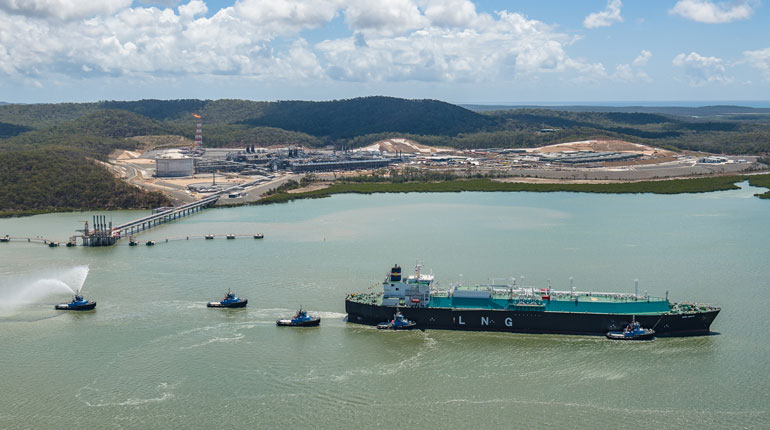 A Saudi offshore platform. The country is attempting to boost its gas production. (Aramco)
A Saudi offshore platform. The country is attempting to boost its gas production. (Aramco)
Saudi Arabia’s new energy minister, Khalid al-Falih, has indicated the kingdom may start importing gas, in a move that would represent a departure from Saudi Arabia’s long-standing policy of meeting its gas needs through domestic production.
"Gas makes up 50% of our energy mix now and we aspire to raise this to 70% from all sources, be it local or – if it is possible – from a source to import from at a competitive price," Falih told a news conference in Riyadh on Tuesday.
This is not the first time Saudi Arabia has indicated that it might start importing gas. The country’s energy ministry and state oil company Saudi Aramco have discussed the potential for an LNG terminal several times. Plans for a terminal on the Red Sea looked set to be revived three years ago, but the country has so far stuck to its original policy.
Although Saudi Arabia leads the world in oil production, its gas output is limited, which means the country may need to consider foreign sources. However, it has a limited pool of potential sellers in the Middle East. Saudi Arabia’s relations with Qatar and Iran, which together produce around 60% of the region’s gas, are frayed.
Riyadh appears to be taking a more hardline approach to Iran since Tehran signed a nuclear deal with international powers. Saudi Arabia created an Islamic coalition against terrorism with its neighbours earlier this year, but excluded Iran.
Even if a purchase deal were struck with a regional gas producer, Saudi Arabia could not expect to receive a discount on international prices.
"The region’s gas producers – Qatar and Iran – have markets that are international and probably they will get a much higher return in that market than if they sold regionally to their neighbours," Sadad al-Husseini, owner and founder of Husseini Energy and former executive vice president of Aramco’s upstream operations, told Interfax Natural Gas Daily.
Nevertheless, gas prices have fallen and Qatar has spare export volumes to place along with LNG plants that could potentially supply Saudi Arabia. Gas prices have fallen as a consequence of low oil prices, to which long-term LNG contracts are indexed.
Even so, once the cost of constructing an LNG terminal in Saudi Arabia is amortised and factored into calculations along with third-party charges, the price of the gas it would receive would almost double.
What goes down...
Although plans to import gas may be gaining ground in Saudi Arabia as a result of low international prices for the fuel, things may not stay that way.
"Temporarily, they could probably find some gas on the spot market that would cost less, but the price fluctuates. It might be cheaper now but it could go up later," Jim Krane, an energy analyst at Rice University’s Baker Institute, told Interfax Natural Gas Daily.
Even though production of domestic sour gas may be expensive, Saudi Arabia would still prefer to tap these reserves than rely on imports.
According to the National Transformation Program 2020 (NTP), which was approved by the country’s cabinet on Monday, Saudi Arabia aims to increase its dry gas production from 336 million cubic metres per day (MMcm/d) to 498.4 MMcm/d. Aramco discovered five new oil and gas fields last year, including two non-associated gas fields. The company also found three new gas reservoirs in its existing fields.
Saudi Arabia’s plan to replace oil-fired electricity generation with gas is part of its plan to free up oil volumes for export. "Saudi Arabia has the opportunity to sell oil, and therefore anything that they replace that domestic burning with has a much higher value than just the gas itself," said Husseini. This, along with the need to produce more power to meet demand, has put pressure on available gas supplies.
The country’s electricity demand has risen by 7% per year over the past decade. The government hopes to slow this rate of growth by lowering subsidies. In the NTP, the government said it would recover SAR 200 billion ($53 billion) by 2020 by raising electricity and water tariffs.
The country also intends to improve the efficiency of its power plants so that less gas is needed to produce the same amount of power. The efficiency of the Saudi utility sector was 32% in 2013 and had increased to 35% by the end of last year. The country aims to boost this figure to 45% under the Energy to the Kingdom initiative. Saudi Arabia’s switch from simple-cycle to combined-cycle turbines will help the country reach this goal.








Talk to us
Natural Gas Daily welcomes your comments. Email us at [email protected].